- Introduction.
- One is reading, two is reading, three or four is play, and five is arithmetic.
- What is reading comprehension? It has nothing to do with the amount of reading!
- What are the six components of basic reading comprehension in the language of study?
- What can I do to improve my reading comprehension?
Introduction.
I don’t remember what prompted the discussion, but the topic of “reading comprehension” came up, and I remembered that I had read “AI vs. Children Who Can’t Read Textbooks” by Noriko Arai before, and re-read it.
Since this book was published in 2018, more than 5 years ago, I wondered if there had been any updates to the reference to reading comprehension since then, so I scoured YouTube and found this video, which I also watched.
One is reading, two is reading, three or four is play, and five is arithmetic.
I personally like Mr. Arai’s blunt, toothless manner, and at the end of this work, he states that what is needed in school education is “first reading, second reading, third and fourth play, and fifth arithmetic.
He explains that without basic reading comprehension skills, students will not be able to solve not only Japanese, but also all kinds of subjects such as arithmetic, social studies, and science because they will not be able to grasp the text in the first place. Basic reading comprehension is necessary not only for children but also for adults in their work. In this sense, the most important thing is basic reading comprehension.
Until I took the college entrance exam, I had not neglected, or even recognized, reading comprehension, and was more interested in mathematics and physics, but since entering the workforce, I have had more opportunities to keenly realize the importance of reading comprehension.
With reading comprehension, one can advance in any subject on one’s own, and reading comprehension is also essential for correctly communicating one’s intentions and correctly understanding the intentions of others in one’s work. It is no exaggeration to say that reading comprehension is the foundation for everything and influences one’s life.
Now that we know the importance of “reading comprehension,” what is “reading comprehension” anyway?
Everyone talks about reading comprehension and reading comprehension, but what is the “reading comprehension” that everyone has in mind when they talk about reading comprehension? When we think of reading comprehension, we think of the Japanese language. Japanese is the language of novels. It seems that there is a somewhat fluffy definition of “reading and understanding novels. 、、、、
Arai defines reading comprehension with the example of two sentences.
What is reading comprehension? It has nothing to do with the amount of reading!
First, here is the text. A paragraph from “Jogakusei” written by Osamu Dazai.

Next, Wikipedia’s description of “solar eclipse”.
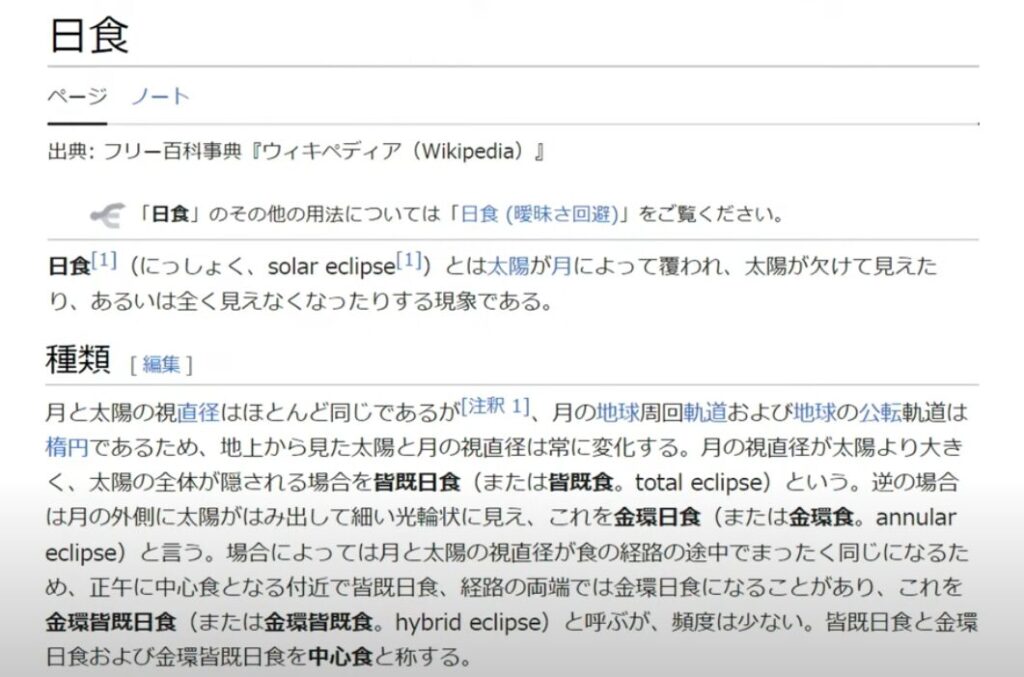
The two are the same sentence, but they have completely different explanations.
As can be seen here, there are two main types of languages.
- Language of learning: language used to convey knowledge systematically (e.g., textbooks, newspapers, encyclopedias)
- Living language: other than the language of study (e.g., communication on social networking sites, novels)
In the previous example, Wikipedia’s description of the eclipse is the “language of learning,” while Osamu Dazai’s female students are the “language of life.
Arai then positions “reading comprehension of learned language” as a basic reading skill.
‘Higher reading comprehension in the language of learning → higher self-study ability, higher class comprehension → higher overall academic performance’
Based on the hypothesis that “the education and learning survey for middle and high school students is a good idea,” we are conducting an education and learning survey for middle and high school students.
Although it is important to read novels to grasp the author’s intentions and to write down one’s impressions of the novels, the interpretation depends on one’s sense of values (which is why it is interesting), and in fact, according to the results of a survey conducted by Mr. Arai, there is no correlation between the amount of reading and reading comprehension.
First, reading habits. Do you like reading or not? If they answered “like,” we asked them in considerable detail when they started liking reading, and if they answered “not like,” when they started not liking reading, how many books they read in the last month, and whether they liked literary or non-fiction books. As a result, none of the items showed any correlation with the ability score. This was shocking. Naturally, we had expected that students who answered that they had loved to read since they were young would have higher reading ability.
AI vs. Children who cannot read textbooks] Noriko Arai
It may seem like an eye-opener, but it is true that the reading comprehension skills needed to correctly grasp problem statements in math, science, and other subjects, or to correctly read documents encountered in the workplace as an adult, are likely to be different from those of a novel. Reading a novel in a rambling manner is a hair different from reading through each sentence, grasping the logical structure and definitions of words.
What are the six components of basic reading comprehension in the language of study?
So what are the sentence structures that make up basic reading comprehension in the language of study? The report details six of them.
The six are: “entailment, correspondence, synonymous sentence judgment, inference, image identification, and concrete identification.
A simple problem is actually mentioned regarding these six, so it is described.



First, there are three robust structural reading skills that are independent of context and vocabulary: engaged, collocational, and synonymous sentence judgments. This is the part that can be done by AI.
- Engagement: the relationship between subject and predicate and between modifier and moderated.
- Correspondence: understanding what the indicative pronoun refers to
- Synonymous Sentence Determination: Compare two different sentences and determine if they have the same meaning.
The next three are the ability to connect sentences to the real world and concepts (nonverbal information), an area where AI is still not very good.
- Reasoning: Ability to understand the meaning of sentences based on an understanding of sentence structure and by mobilizing life experiences, common sense, and a variety of knowledge.
- Image identification: the ability to compare sentences, figures, and graphs and recognize whether the content is consistent.
- Concrete identification: the ability to read a definition and recognize specific examples that match it.
Now that ChatGPT has made long strides, though, I feel that we have made some progress in inference, image identification, and even concrete identification.
And here are the results of having middle and high school students solve these six components of reading comprehension. While all of the areas improved over the course of the school year, there are some areas where the percentage of correct answers is less than half.
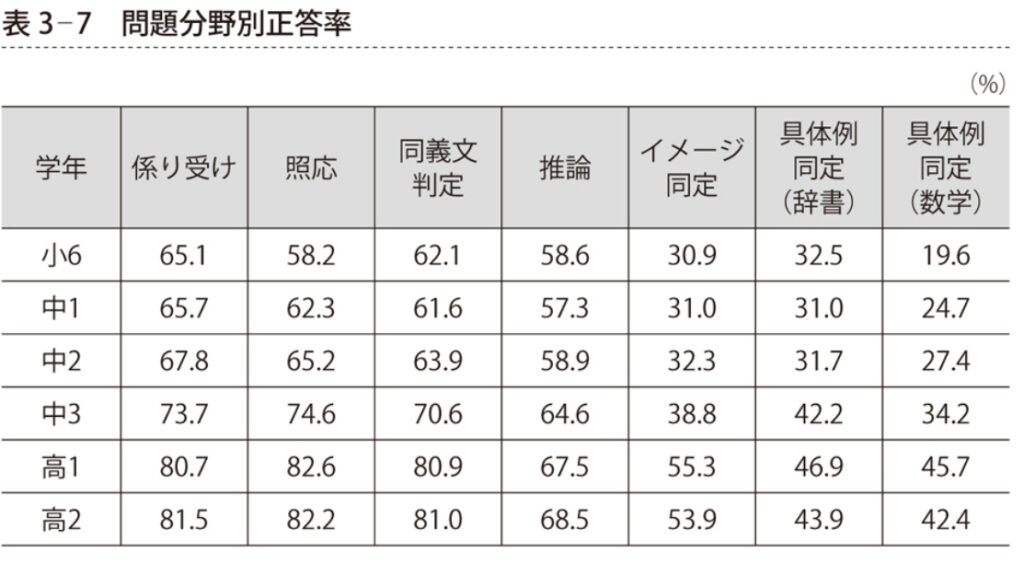
Incidentally, private junior and senior high schools, known as the “Gosanke” schools, sifted out students who had reading ability values equivalent to that of a high school senior in a public preparatory school at the age of 12 when they were screened for middle school entrance exams.
In other words, it is not about the education at the integrated junior and senior high school, but rather the fact that only students with high reading comprehension skills are recruited, so that even if a student spends all his/her time until the second year of high school in club activities and gets a red mark, he/she will be able to “read and understand” textbooks and problem books and, with one year of hard study for the exam, be admitted to a class of the former imperial universities. It is a cruel, but true story.
So, how can we develop the six components that make up this basic reading skill? is the key.
What can I do to improve my reading comprehension?
Unfortunately, however, at the time this work was published, Arai examined various correlations and found that none of the following correlated with reading comprehension.
- Reading: amount of reading, reading habits, favorite book genres
- Study habits: How many hours a day do you study, do you go to cram school, do you take lessons, do you have a tutor?
- Strengths: Strengths and weaknesses in science subjects
- How much you use your phone per day
- Newspaper subscription or not
- From what media do you get your news?
- gender
So, is there no more to be done? It would seem that reading comprehension is a skill and that it is important to create and solve your own problems that focus on the six elements mentioned earlier. Later, he also hypothesizes that there is no age limit. Although on a case study level, he said that there are examples of reading comprehension skills improving in adulthood.
Somehow, there is hope.
He said that it is important to “pay attention” and check the definitions one by one, rather than “end up feeling like you understand somehow” when reading a textbook. Although this is a cognitively demanding task, if we fail to do so, we will not be able to understand the textbook, and we will “feel” like we have studied by memorizing and working hard at digital drills, and although we can answer the same questions, when it comes to slightly twisted applied questions, we will instantly be unable to solve them.
For example, if you read the Wikipedia page on “eclipse” mentioned earlier.
The visual diameters of the Moon and the Sun are almost the same, but the Moon’s orbit around the Earth and the Earth’sorbit is elliptical, so the visual diameters of the Sun and Moon as seen from the ground are constantly changing.
Instead of just saying, “Hmmm,” and ending up with the feeling that you somehow understand.
The visual diameter is the apparent diameter of a celestial body as seen from the observer’s point of view, expressed as an angle on the celestial sphere.
When the visual diameters of the Moon and the Sun are “almost the same,” it means that these two celestial objects appear to be about the same size when viewed from the Earth.

And because the Moon orbits the Earth in an elliptical orbit, and because the Earth orbits the Sun in an elliptical orbit, the distances between the Moon and the Earth and between the Sun and the Earth are not constant over time, so the visual diameter of the Sun and the Moon both change when viewed from the Earth. The reason why the explanation of ellipses is included is that if the orbit were perfectly circular, the distance would be constant and the visual diameters of the Moon and the Sun as seen from the earth would not change.
I have to read and understand such things. It is very difficult. But if you don’t understand this first, you won’t be able to understand the explanations of “annular solar eclipse” and “total solar eclipse” that follow in Wikipedia.
There are no shortcuts to things, so keep at it. Reading comprehension is fortunate because it is a skill.
P.S. I’m not sure if this is related to reading comprehension, but “attention” reminded me of this article, which explained that people who cannot distinguish between facts and opinions have an attention problem rather than smarts.
It is also, perhaps coincidentally, the “Attention” mechanism that is the key to the deep learning model called Transformer, which has become the foundation of ChatGPT’s success. The title of the original paper is Attention Is All You Need.
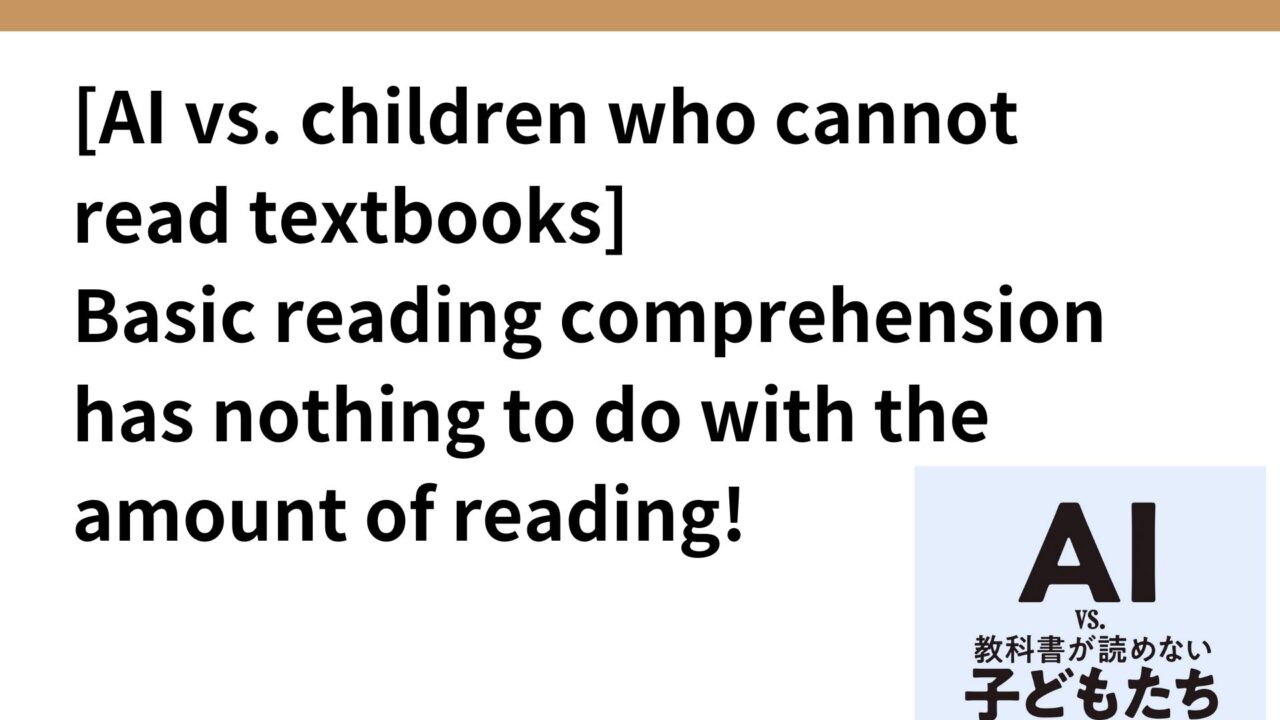


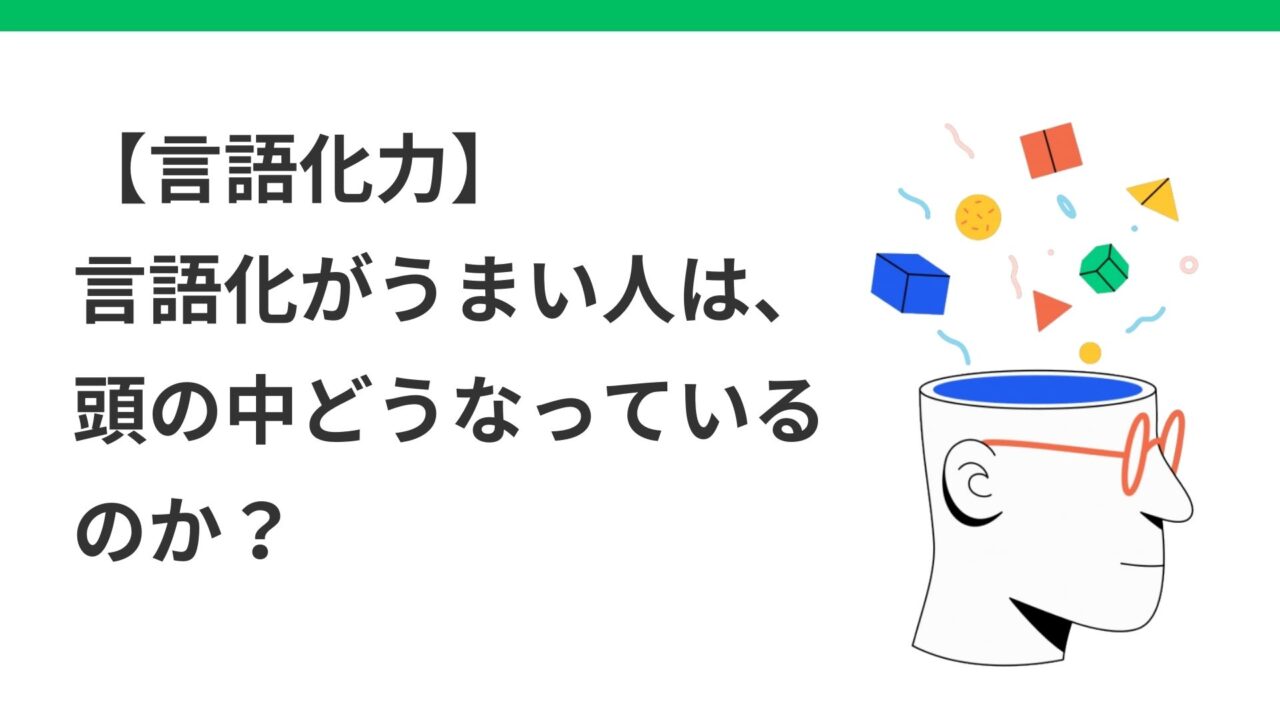
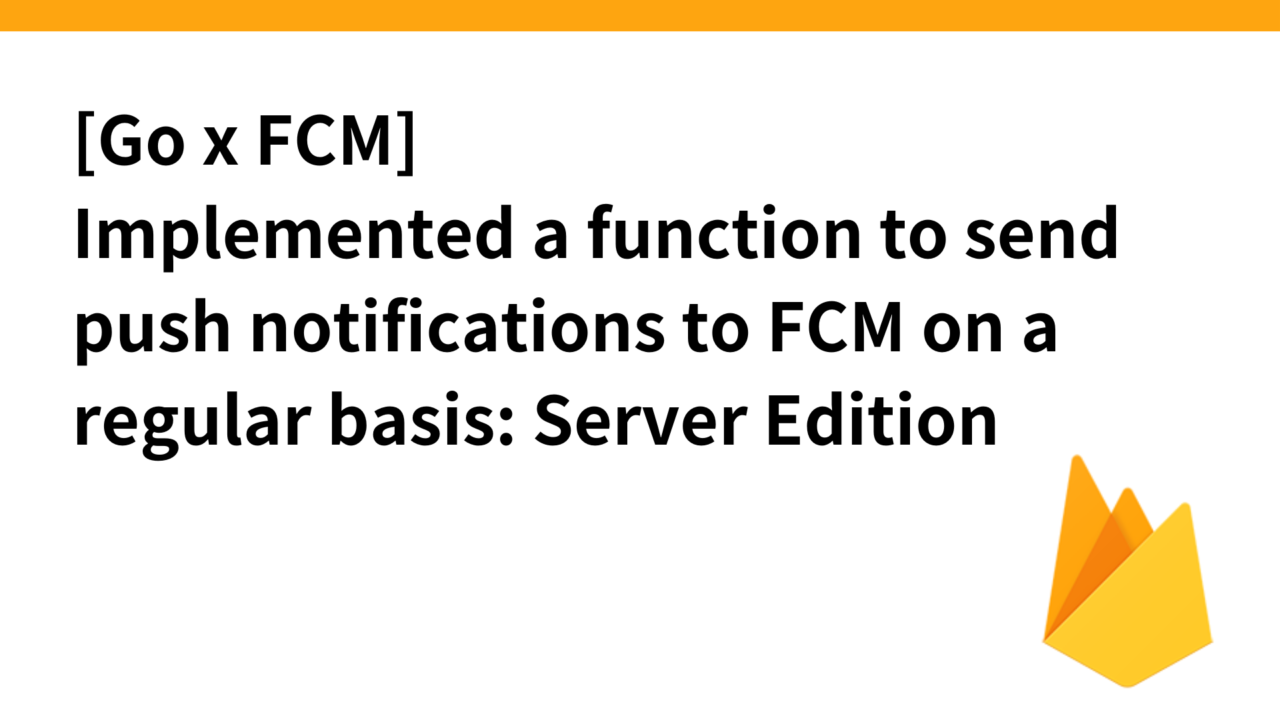
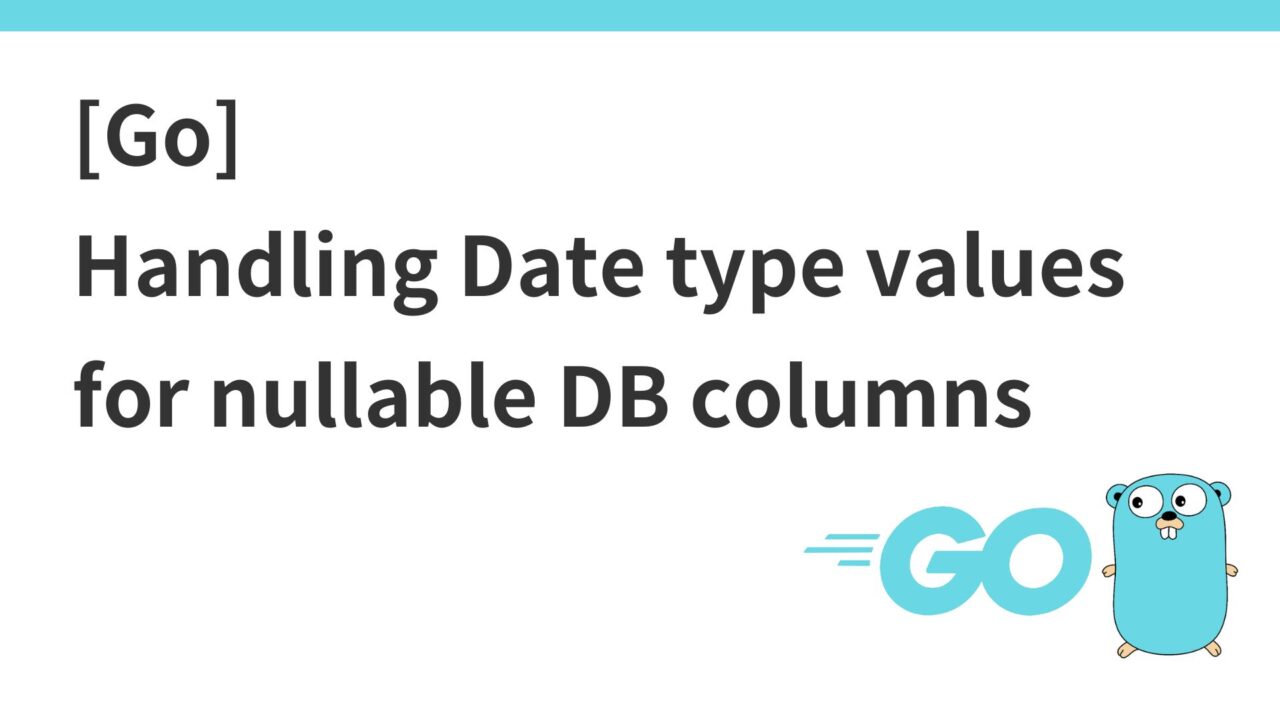
コメント